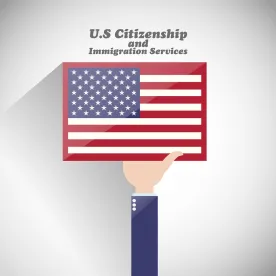Although we are still officially in the year 2016, it is a good time for employers to start preparing for the H-1B Cap for Fiscal Year 2018, which begins October 1, 2017. Demand for the H-1B has steadily increased over the years. Specifically, last year only about 36% of the H-1B petitions were selected in the lottery. Employers should expect this trend to continue and be prepared to file their H-1B petitions on the earliest possible date, which is April 3, 2017 this year (April 1, 2017 falls on a Saturday).
Background:
The H-1B is a significant visa category as it allows qualified professionals to enter the U.S. for employment in a specialty occupation. Only a limited number may be granted each fiscal year (which runs from October 1st through September 30th). Under current immigration law, only 65,000 new H-1B petitions may be granted each fiscal year with an additional 20,000 available for those individuals with advanced degrees from a U.S. academic institution.
For Fiscal Year 2016, USCIS received nearly 236,000 H-1B petitions during the filing period. For the prior year, USCIS received approximately 233,000 H-1B petitions. It is anticipated that this trend will continue and even more cases will be filed this year.
Because of the large number of cases being filed, there is a significant chance that cases could miss the filing date due to delays, particularly at the Department of Labor (DOL). As part of the H-1B petition, employers must have a Labor Condition Application (LCA) certified by the DOL. No H-1B petition will be accepted by USCIS without a certified LCA. Normal processing of LCAs generally takes about 7 to 8 days. However, as volume increases in March, LCAs may take longer. Proskauer recommends filing as many LCAs in earlier months as possible to ensure that the H-1B petitions are ready for filing in anticipation of April 3.
Evaluating Your Potential H-1B Population:
Due to the increased demand for the H-1B, it is important that employers evaluate their employee populations early to ensure that all petitions are submitted by the earliest possible date. We outline below some of the types of employees to review when making decisions whether to file an H-1B petition.
F-1 Students: Students, particularly those on F visas and currently working for you pursuant to approved Optional Practical Training (OPT) should be the first group of employees to consider for filing an H-1B petition on April 3rd. The reason for this is simple. If you do not file H-1Bs for these employees, they will lose their employment authorization at the conclusion of their OPT (unless they are able to extend it in the limited circumstance described below).
Moreover, even when employees may extend their OPT it is advised to file an H-1B for Fiscal Year 2018. This gives the employees two opportunities to obtain the H-1B. If more applications are filed than visas available and these employees do not obtain the H-1B this year, then the OPT extension may serve as a backup and you can file for the H-1B again next year.
L-1Bs: In recent years the L-1B visa category has faced increased scrutiny. The L-1B is for intracompany transferees who are being relocated to the U.S. to serve in a specialized knowledge capacity after having been employed by the company abroad for one year in either a managerial or specialized knowledge role. The strict interpretation of what qualifies as specialized knowledge has resulted in denials of many L-1B petitions. Therefore, rather than file an L-1B extension many employers are opting to file H-1Bs.
Certain Green Card Cases: Certain applicants for green cards may run out of authorized time in the U.S. unless they are in H-1B status. We recommend you consult with counsel on such cases.
Employers and HR professionals should take time during the holiday season to evaluate their nonimmigrant population and determine which employees should apply for the FY 2018 H-1B Cap. It is not too soon to send H-1B cap cases to the lawyers!








 />i
/>i

